Modern cars have many safety features, like the Anti-lock Braking System (ABS). It stops wheels from locking up when you brake hard. This keeps the car from skidding.
ABS makes driving safer by letting you steer while braking. This helps avoid accidents. Most cars today come with ABS, showing how important it is for safety.
It’s key for drivers to understand how ABS works. Knowing its role helps drivers use it better. This makes driving safer for everyone.
Topic Summary
- What Does ABS Mean on a Car: Definition and Purpose
- How Does the ABS System Work in Your Vehicle?
- Essential Components of an ABS System
- Benefits and Safety Advantages of ABS in Modern Vehicles
- Common ABS Problems and Maintenance Tips
- Conclusion
- FAQs on What Does ABS Mean On A Car?
- What Does ABS Stand For in The Context of Vehicle Safety?
- How Does ABS improve Vehicle Safety?
- What Are The Main Components of An ABS System?
- What Does The ABS Warning Light on My Dashboard indicate?
- Can I Drive My Vehicle Safely if The ABS Light is on?
- How Do I Maintain My Vehicle’s ABS System?
- Is ABS a Standard Feature in All Modern Vehicles?
- Can ABS Be Retrofitted into An older Vehicle That Doesn’t Have it?
What Does ABS Mean on a Car: Definition and Purpose
ABS stands for Anti-lock Braking System. It’s a key safety feature in cars. It stops wheels from locking up when you brake hard.
This system keeps tires in touch with the road. It lets drivers steer safely, even when braking hard.
ABS is very important. It helps avoid skidding and losing control. Knowing about ABS makes driving safer.
The Definition of Anti-lock Braking System
ABS stops wheels from locking up when you brake hard. It works by quickly pumping the brakes on and off. This keeps tires in contact with the road.
ABS helps in many ways:
- It stops wheels from locking up during braking
- It keeps the vehicle stable and in control
- It helps with steering when you brake suddenly
- It makes stopping shorter on different surfaces
The Evolution and History of ABS Technology
ABS technology started in the early 20th century. The first working ABS systems came out in the late 1960s and early 1970s. They were first used in planes and then in cars.
ABS has changed a lot over time. It has become more advanced and common in cars.
Important milestones in ABS include:
- The first electronic ABS in the late 1970s and early 1980s
- Improvements in sensors and control units
- Working with other safety features like traction control
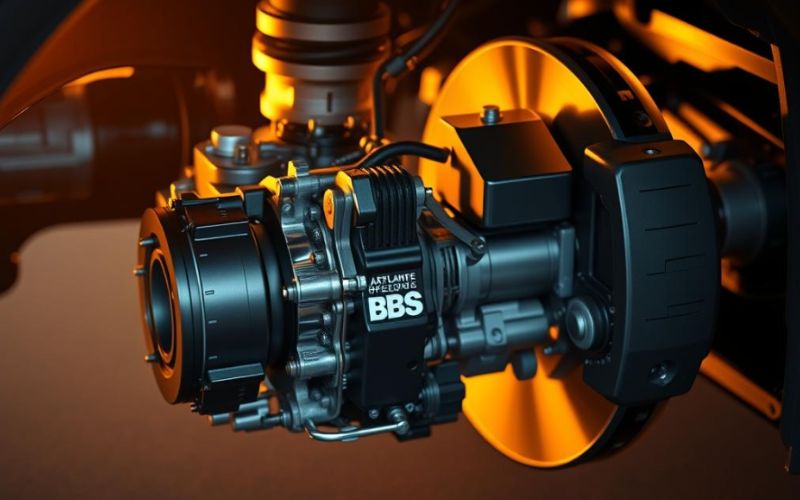
Now, ABS is in most cars. It makes driving safer and helps prevent accidents. ABS keeps getting better, showing its big role in car safety.
How Does the ABS System Work in Your Vehicle?
The Anti-lock Braking System, or ABS, is a key safety feature in cars. It stops wheels from locking up when you brake hard. This helps keep the tires in touch with the road, making the car easier to control and less likely to skid.
Basic Principles of Anti-lock Braking
ABS works by quickly pressing the brakes on and off. This stops the wheels from locking up. It makes sure the car stays stable and easy to steer.
It uses speed sensors, a valve body, and an electronic control unit (ECU). These parts work together to keep the car safe.
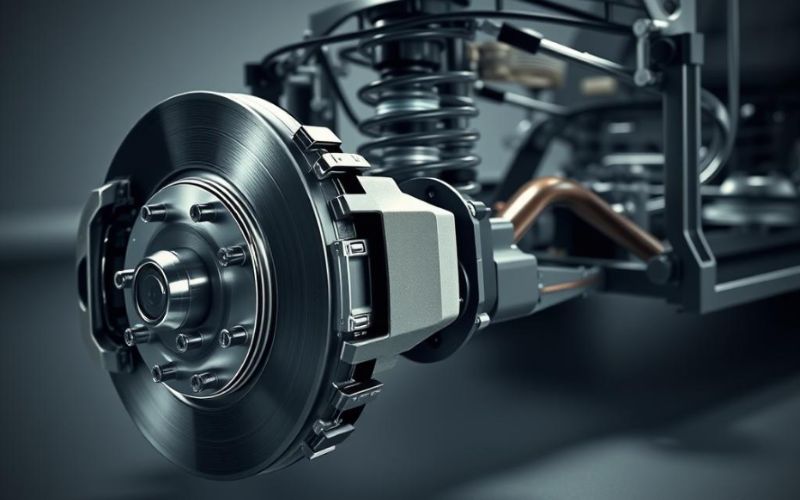
The Science Behind Wheel Lock Prevention
ABS keeps an eye on each wheel’s speed and adjusts the brakes. If a wheel is about to lock up, it cuts the brake pressure. This lets the wheel keep moving and stay in touch with the road.
This quick change happens many times a second. It keeps the car stable and lets you steer around obstacles, even when braking hard.
Difference Between Cars With and Without ABS
Cars with ABS are safer than those without. Without ABS, hard braking can make the wheels lock up. This can cause the car to skid or slide, which is dangerous on slippery roads.
But cars with ABS can stop safely and keep going in the right direction. This makes ABS a must-have for safety, helping avoid accidents when braking hard.
Essential Components of an ABS System
Knowing the parts of an ABS system is key to understanding its safety benefits. The ABS system has many parts that work together. They prevent wheels from locking up when you brake hard.
ABS Sensors: Function and Location
ABS sensors are vital for checking each wheel’s speed and rotation. They are usually near the wheel hubs or on the axle. These sensors send signals to the ABS module about each wheel’s speed and how fast it’s slowing down.
These signals help the ABS system know when a wheel might lock up. It then adjusts the brake pressure. This keeps the wheels in contact with the road.
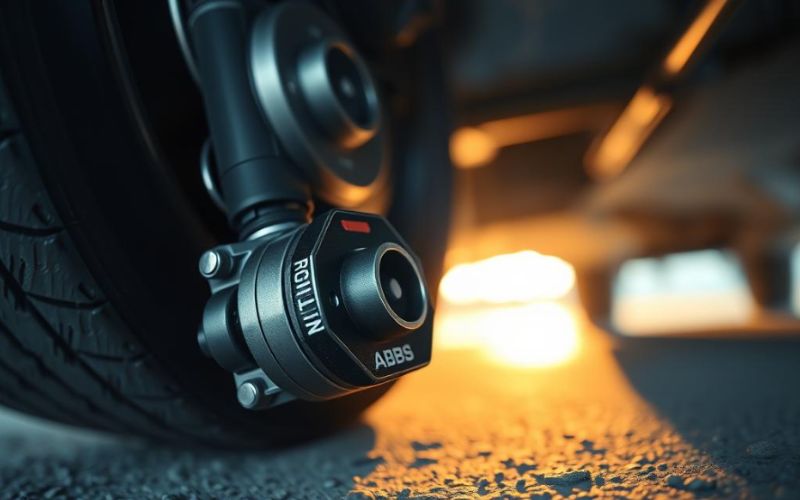
The ABS Module: The Brain of the System
The ABS module is the system’s brain. It takes data from the ABS sensors and controls the hydraulic unit to change brake pressure. You can find it in the engine compartment or under the dashboard.
Its main job is to quickly look at data from the sensors. It then applies or releases brake pressure to stop wheels from locking up.
Hydraulic Control Unit and Valves
The hydraulic control unit (HCU) manages brake pressure in the ABS system. It has valves that the ABS module controls. If a wheel is about to lock up, the module tells the HCU to lower brake pressure to that wheel.
- The HCU has solenoid valves that control brake fluid flow.
- These valves can increase, decrease, or keep brake pressure steady.
- Changing brake pressure quickly helps keep the vehicle stable.
ABS Warning Light and What It Indicates
If the ABS light on your dashboard comes on, it means there’s a problem. The ABS system lights up the ABS warning light on the dashboard when it finds a fault.
This light means there’s an issue with the ABS system. It could be a bad sensor or a faulty ABS module. If the ABS light is on, you should get it checked by a mechanic.
- Look for damage or corrosion on the ABS sensor.
- Check the wiring and connections for wear or damage.
- Scan the ABS system for trouble codes to find the problem.
Benefits and Safety Advantages of ABS in Modern Vehicles
Modern cars with ABS are safer because they stop better in emergencies. This stops wheels from locking up, which helps drivers control the car. It also lowers the chance of accidents.
Enhanced Vehicle Control During Emergency Braking
ABS stops wheels from locking up when you brake hard. This is key because locked wheels can cause you to lose control, mainly on slippery roads. ABS makes the car easier to steer by quickly adjusting the brakes.
Reduced Stopping Distances on Slippery Surfaces
ABS is very helpful on wet or icy roads. It stops the wheels from locking up, which means the car stops faster. This is because ABS adjusts the brakes to keep the car stable and quick to stop.
ABS Integration with Other Safety Systems (ESC, TCS)
ABS works better with other safety systems like ESC and TCS. ESC keeps the car stable by adjusting the engine and brakes. TCS stops wheelspin when you speed up. Together, they make the car safer and more stable.
The widespread adoption of ABS has been a critical factor in reducing the number of accidents on our roads.
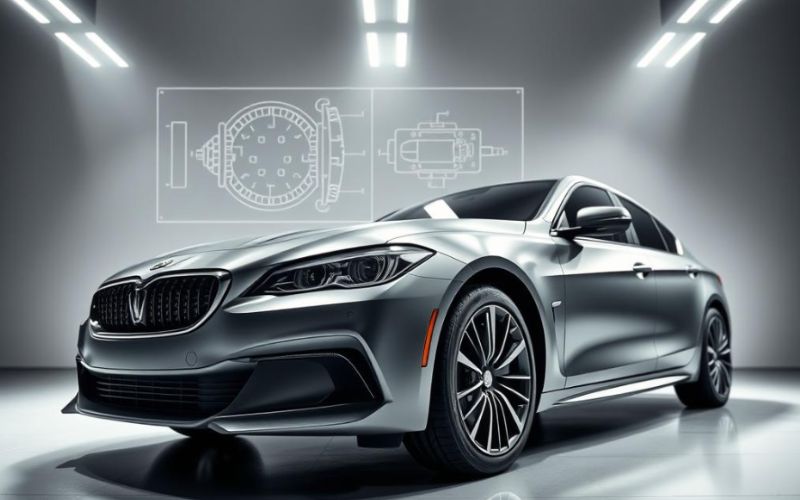
Common ABS Problems and Maintenance Tips
Knowing about common ABS problems helps car owners keep their vehicles safe. The ABS system has many parts, and any can cause trouble.
Interpreting ABS Warning Light Signals
The ABS warning light on your dashboard means something’s wrong with the ABS system. It could be a faulty sensor or a problem with the ABS module. If this light comes on, you need to check it fast to keep your car safe.
When the ABS light turns on, it means the system has found a problem. This could be a bad “car abs sensor” or a problem with the ABS module. Not fixing this can make your car harder to control when you need to stop fast.
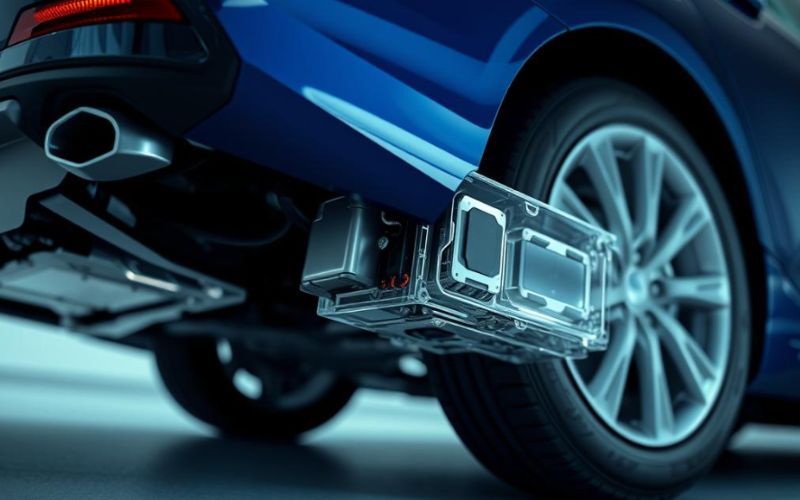
Typical ABS Sensor and Module Issues
ABS sensors and the ABS module are very important. Sensors watch the speed of the wheels and send this info to the ABS module. This module then controls the brakes. Problems with “car abs sensor” can happen because of wear, damage, or rust, causing wrong speed readings.
The “abs module in car” can also have problems, like electrical or software issues. A bad ABS module can make the system fail, which can stop the car from stopping properly when you brake hard.
Proper Maintenance to Extend ABS System Life
Keeping the ABS system in good shape is important. You should check the ABS sensors often to make sure they’re clean and not damaged. Also, look at the ABS module and the hydraulic control unit for any damage or problems.
It’s also important to take care of your car’s brakes, including the pads and rotors. This helps the ABS work better. Keeping everything in good condition can stop the “abs light on car” from coming on.
When to Seek Professional Help for ABS Problems
Some ABS problems you can fix yourself, but others need a pro. If the ABS light stays on after you’ve checked it, or if you hear strange noises or feel vibrations when you brake, it’s time to get help.
A mechanic can use special tools to find and fix the problem. They might need to replace a bad “car abs sensor,” fix the “abs module in car,” or work on other parts of the system.
Conclusion
The Anti-lock Braking System, or ABS, is a key safety feature in cars today. It helps drivers understand what ABS means and how it works. This knowledge is important for safe driving.
We’ve looked at what ABS is, why it’s important, and how it’s evolved. We also talked about its parts and benefits. ABS stops wheels from locking up during hard braking. This keeps the car stable and lets drivers steer to safety.
ABS works better when paired with other safety systems like ESC and TCS. This makes cars safer. Keeping the ABS system in good shape is also important.
In short, ABS is a critical part of car safety today. Knowing how it works helps drivers stay safe on the road.
FAQs on What Does ABS Mean On A Car?
What Does ABS Stand For in The Context of Vehicle Safety?
ABS stands for Anti-lock Braking System. It’s a safety feature that stops wheels from locking up during hard braking. This keeps the vehicle stable and in control.
How Does ABS improve Vehicle Safety?
ABS stops wheels from locking up, which can cause skidding. It keeps the tires in touch with the road. This reduces the chance of accidents.
What Are The Main Components of An ABS System?
An ABS system has ABS sensors, the ABS module, the Hydraulic Control Unit (HCU), and valves. These parts work together to check wheel speed and control brakes.
What Does The ABS Warning Light on My Dashboard indicate?
The ABS warning light means there’s a problem with the Anti-lock Braking System. It could be a faulty sensor, a bad ABS module, or an electrical issue. If it stays on, get it checked by a mechanic.
Can I Drive My Vehicle Safely if The ABS Light is on?
You can drive with the ABS light on, but it’s not safe to ignore it. The ABS system might not work right, which could be dangerous when braking hard. It’s best to fix it as soon as you can.
How Do I Maintain My Vehicle’s ABS System?
Keep your brakes serviced regularly and watch the ABS warning light. Don’t ignore strange noises or vibrations when braking. A mechanic can check it for you and find problems early.
Is ABS a Standard Feature in All Modern Vehicles?
Yes, ABS is standard in most modern cars. It’s because it makes driving safer and helps prevent accidents.
Can ABS Be Retrofitted into An older Vehicle That Doesn’t Have it?
You can add ABS to an older car, but it’s hard and expensive. It needs big changes to the brakes and electrical system. It’s usually cheaper to buy a car with ABS already installed.

